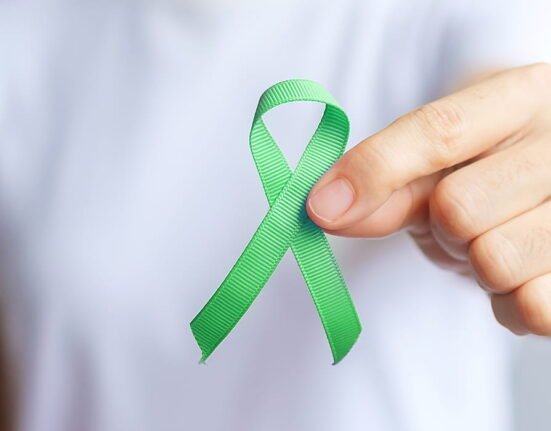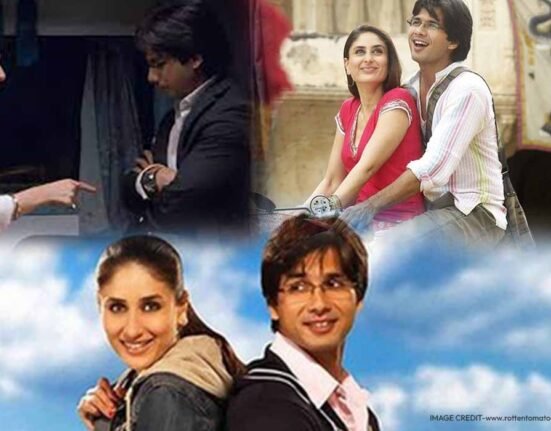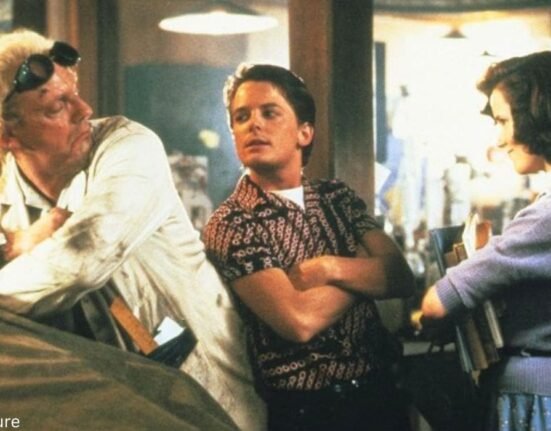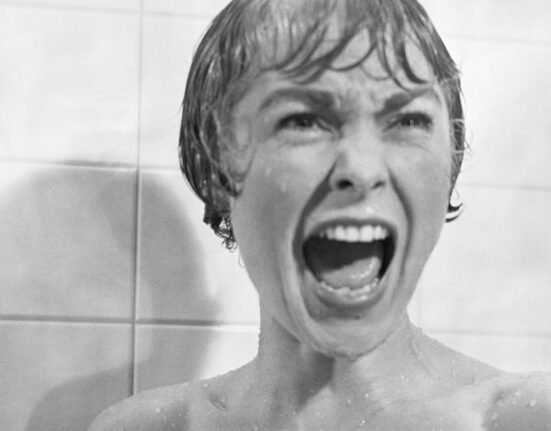Bollywood, being one of the world’s biggest movie industries, has tremendous clout in influencing the public’s attitude towards the most sensitive subjects, including mental illness. Its depiction of psychological illnesses, over the years, has been a chancy mix of ridiculous caricature and flashes of excellent sensitivity. The cinema-mental health connection is not only about entertainment; it is also a social commentary, reflecting, reinforcing, or challenging societal values.
Read More: Psychological Bollywood Movies
All Action and No Light
In the past, psychological illnesses have commonly been viewed as a plot point or a gag in Bollywood. People with disorders like schizophrenia or dissociative identity disorder were widely portrayed in melodramatic and inaccurate ways. A common trope was that of the “mad villain,” where mental illness was equated with unpredictability, violent behaviours, crime, or even evil.
This depiction reinforced stigma and created a false equivalence between danger and psychological disturbance (Sinha & Singh, 2024). Movies such as Tere Naam and Kyon Ki employed mental hospitals as settings for drama of the emotional kind, even glossing over the realities of psychiatric care and lending themselves to a storyline in which the mentally ill people. were portrayed as helpless or irretrievably damaged (Vashist, 2024).
However, Bollywood’s take on mental health has not been constant. Gradually, yet perceptibly, there has been a trend towards sensitivity and realism over time. Movies such as Taare Zameen Par (2007) created a shift. Here, dyslexia was examined based on the perspective of a child’s struggles within a harsh educational system. The hero, Ishaan, is not mocked or intimidated but empathised with, due to a patient teacher who looks beyond the child’s achievements (Bhalla & Tulli, 2024). The movie not only raised awareness regarding learning disorders but also sparked discussions regarding empathy and inclusive education.
Read More: Karthik Calling Karthik
Spotlight on Therapy
Dear Zindagi (2016) provided a glimpse into talk therapy and the healing bond between a patient and her therapist. The female lead, Kaira’s emotional distress is presented sensitively, and her ultimate acceptance of therapy is presented as a display of strength, not weakness (Ahmed, 2021). While the appropriateness of some aspects of therapy depicted by the counsellor, played by Shah Rukh Khan, has been criticised, the character offers advice without judgment, presenting Indian viewers with a seldom-seen perspective of therapy as acceptable and beneficial. That was important in a society in which therapy is stigmatised or rejected outright.
Even with these forward-thinking exemplars, numerous challenges remain. Bollywood often falls into the trap of sensationalism, choosing drama over the precision of depiction. Movie makers resort to visual signals, metaphors, and dramatic mood changes to represent internal mental states, tending to oversimplify intricate disorders (Ahmed, 2021). Patients with bipolar disorder and schizophrenia, for example, are depicted as having sudden, unprovoked eruptions or visions, which skews public perception.
Additionally, the diagnostic process, variety of treatments, and range of recovery are seldom shown in the depth they require (Bhalla & Tulli, 2024). The depiction of therapy itself remains an area of concern, though there has been some improvement. Despite doing a great deal to popularise and mainstream therapy, too many films still present therapists as quirky, otherworldly, or hyper-philosophical characters instead of professionals with training.
The therapy process is often depicted as instant and magical, with problems solved in a handful of sessions or with one deeply insightful conversation. The line between counselling, clinical psychology and psychiatry is often blurred as well. Such depictions, though emotionally rewarding, do not mirror the actuality of mental health treatment, which is typically long-term, non-linear, and highly personal (Bhalla & Tulli, 2024).
Read More: Some Bollywood Film Stories Based on Mental Health
Leads, Extras and Sets: Positioning Mental Health
Additionally, the depiction of Bollywood revolves around personal suffering and neglects structural determinants of mental disorders, like poverty, discrimination based on caste, domestic violence, or gender oppression. In individualising mental health, films tend to neglect the social determinants that influence emotional well-being (Poonia & Sangwan, 2024).
The emphasis continues to be mainly on the curative side of mental well-being, and very rarely do we have stories based on community mental health programs or large-scale reform that target prevention. Another crucial aspect is the gender representation of mental illness. Female characters suffering from mental illness are typically shown to be emotionally volatile, irrational, or hypersexualised.
Movies like Arth and Judgementall Hai Kya highlight the gender bias in society, with the female lead characters being perceived as being on the edge. While some characterisations are sensitively done (e.g. 15th Park Avenue), some regress to stereotypes that define mental illness in terms of femininity or emotionalism (Kapoor, 2023). Meanwhile, men are typically depicted as silently suffering, perpetuating the poisonous ideal of stoicism and repression.
Read More: 6 Times Bollywood Was Right about Mental Health
Sequel: The Way Forward
Bollywood’s increasing fascination with mental illness stories is a welcome development. Chhichhore and Tamasha try to tackle depression, suicide, and identity crises with varying success. These movies are not always accurate, but they indicate a change in popular interest and social dialogue (Kapoor, 2023). The very fact that mainstream movies are trying to portray therapy, anxiety, or learning disorders is an indication of how more relevant mental health is becoming in India’s cultural discourse.
The path forward is to get beyond tokenism. It means that filmmakers must engage mental health experts in the development of scripts, employ trauma-informed narrative, and show recovery as multifaceted but a possibility. Cinema needs to capture the varied realities of Indian life and portray rural mental health concerns, the LGBTQ+ reality, the neurodiverse population, and mental illness among older people. Inclusion has to be backed by authenticity.
In short, though Bollywood has gone a long way towards depicting psychological disorders more sensitively, there is still much to be done. The medium’s power to shape thought is both a strong friend and a scary deceiver of the mental health story. To rid mental illness of stigma and truly raise awareness, Bollywood will need to commit not only to the romantic highs of mental illness, but its quotidian, often imperceptible, humdrum realities. Only then can it transition from dramatising disorders to genuinely de-stigmatising them.
References +
Ahmed, S. (2024). Exploring Depictions of Mental Health in Popular Hindi-Urdu Cinema. Journal of Critical Global Issues, 2(1). https://doi.org/10.62895/2997-0083.1018 Bhalla, B., & Tuli, K. (2024). Understanding Portrayal Of Mental Illness In Popular Cinemas: A Comparative Analysis Of Rain Man And My Name Is Khan. International Journal of Creative Research Thoughts, 12(7), 2320–2882. https://www.ijcrt.org/papers/IJCRT2407364.pdf
Kapoor, M. (2024, October 10). World Mental Health Day: How Bollywood Has Used Its Power Of Storytelling To Address Mental Health Stigmas – ANOKHI LIFE. ANOKHI LIFE. https://www.anokhilife.com/entertainment-world-mental-health-day-bollywood-addressin g-mental-health-stigmas/
Neha Vashist. (2025, February 26). Bollywood’s portrayal of mental health: Have we covered the distance from stigma to sensitivity? The Times of India; Times Of India. https://timesofindia.indiatimes.com/entertainment/hindi/bollywood/news/bollywoods-por trayal-of-mental-health-have-we-covered-the-distance-from-stigma-to-sensitivity/articles how/118575994.cms
Poonia, R., & Sangwan, A. (2024). Beyond Bollywood: A Critical Exploration of Mental Health Awareness in “Dear Zindagi” and “Chhichhore.” Universal Research Reports, 11(4), 73–84. https://doi.org/10.36676/urr.v11.i4.1313
Sinha, J., & Singh, G. (2024). BOLLYWOOD CINEMA AND MENTAL ILLNESS: AN APPROACH TO BALANCE ENTERTAINMENT AND EXACTNESS. ShodhKosh: Journal of Visual and Performing Arts, 5(1). https://doi.org/10.29121/shodhkosh.v5.i1.2024.447













Leave feedback about this